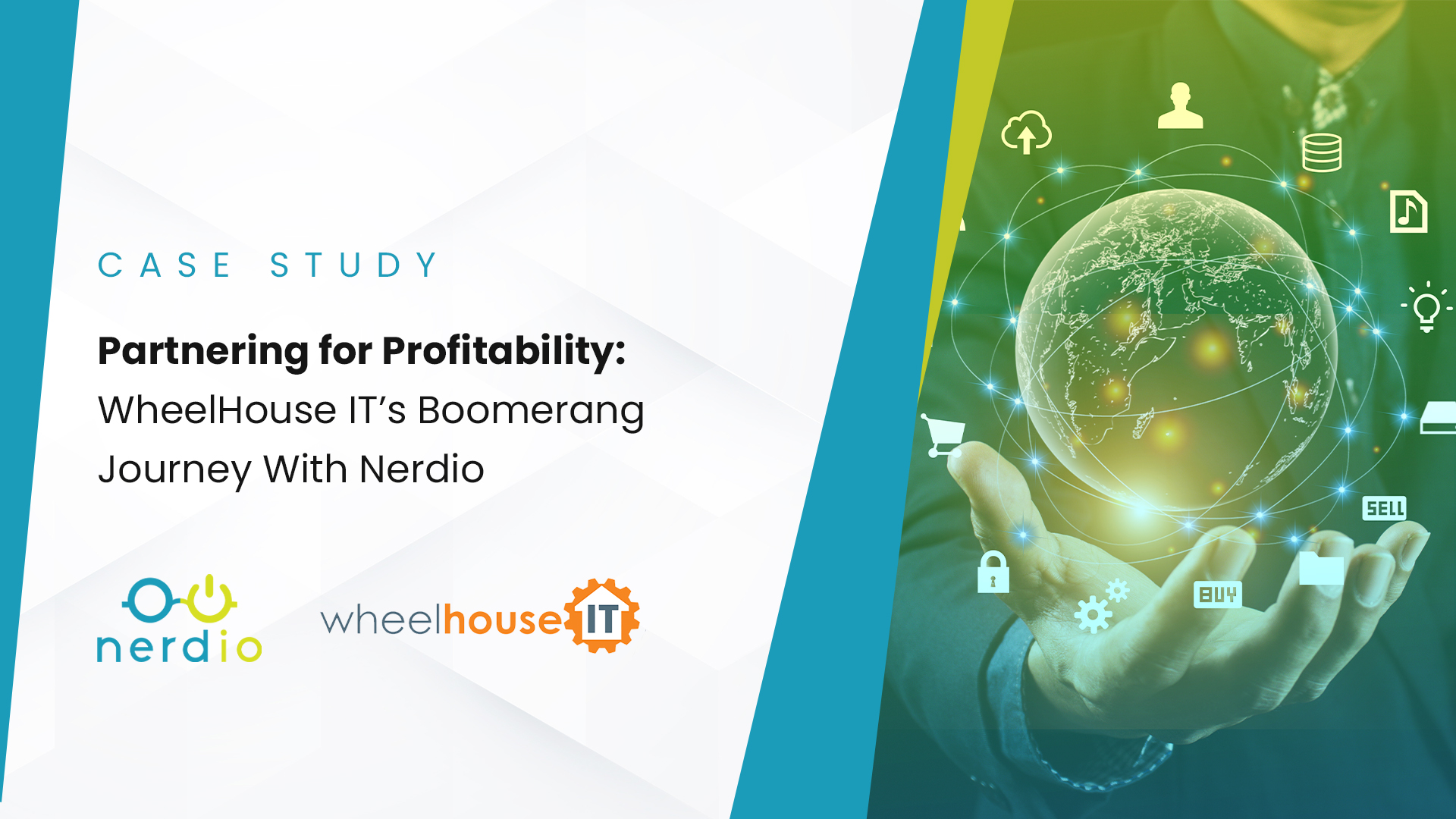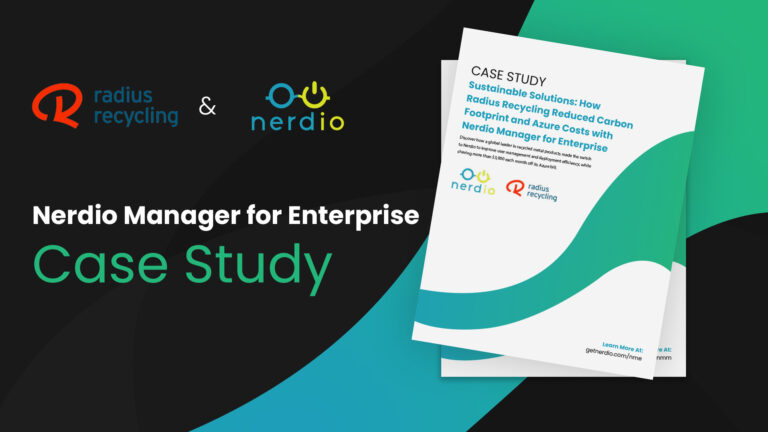Case Study
Learn how an energy company deploys, manages and cost-optimizes Azure Virtual Desktop company-wide with Nerdio Manager for Enterprise quickly and easily.
About Petrofac
United Kingdom-based global company Petrofac provides services to energy companies that deploy large teams across the globe. The company helps design and build complex structures for deployment on job sites, providing engineering, construction, procurement, and administrative services. In its quest to support remote work, Petrofac began planning an Azure Virtual Desktop deployment in late 2019. Little did the company know that the project would become a bedrock for its remote workers when the COVID-19 crisis forced widespread remote work practices a few months later. Even though employees at some locations are now able to access their office buildings, the engineering team continues to use Azure Virtual Desktop with Microsoft Azure NetApp Files, a fully managed cloud service. Petrofac attributes survivability during a multinational lockdown, enhanced performance, and falling costs to its deployment of these critical Microsoft services.
Petrofac was working on digital transformation when the COVID-19 crisis increased the urgency of the initiative. The compute demands created by thousands of engineers working on bulky 3D image files on specialized desktop devices added complexity. But the company’s pivot to remote work with Azure Virtual Desktop solved that problem and created other benefits. The resulting performance gains sped up timelines, and engineers can now work anywhere. Increased scalability saves operational budget, too. Most importantly, business continues smoothly regardless of challenging times.
Meshing complex needs across the globe
Petrofac is largely an engineering company, depending on its talent to deliver construction plans and schema for complicated processes. Those 3D workloads are complex enough in isolation: they’re demanding, comprise large files, and engineers generally need graphical interfaces to work on them. Add globally distributed engineering teams to this data-intensive enterprise, and it’s easy to understand the challenges of supporting that functionality at scale. Vladimir Krdzic, Chief Digital Officer at Petrofac, decided to set the organization on a digital transformation path. “Many of our engineers had been doing the same work for decades and were entrenched in very traditional methods,” he says. “I wanted Petrofac to become a more agile and flexible company that would also attract millennial workers to join our team.”
The complex 3D models that engineers create require specialized desktop devices that cost at least four to five times that of a standard office device often much more. An even bigger challenge lies in the demanding workloads inherent to those models’ millions of central processing unit (CPU) and graphics processing unit (GPU) cycles. That dictated a culture of working onsite because every office that works on the same engineering model must sync to the application database daily. This requires bandwidth that isn’t available in many homes in India, where most of the Petrofac engineering team is based. Many engineers don’t have fiber connections, and productivity can suffer in regions where frequent power outages take down internet connections at inopportune moments.
Adding to these demands, large 3D files must be shared between teams that are spread across the globe. Every revision must go through a review cycle, from engineering teams in Mumbai to reviewers in Dubai, possibly cycling back and forth tens to hundreds of times. Other external parties such as Petrofac joint venture partners or clients also need to access the files, and when they store them on personal devices, the amount of data in play grows further.
With multiple concurrent joint ventures, Petrofac often found itself in the position of having to work with companies across multiple continents, creating what Krdzic considers an operational and security burden. “It was time-consuming and unstable; it had the potential to increase cyber-exposure issues,” he says.
We’re using Azure Virtual Desktop to spin up projects very quickly and add as many users as we need without file synchronization issues. That means faster time to market for us. – Vladimir Krdzic: Chief Digital Officer Petrofac
Coordinating people and data
While version control issues might be annoying when collaborating on a Microsoft Word document, getting out of sync when collaborating on a 3D file can result in unnecessary costs for Petrofac if engineers need to rework files. “Our files ping pong between departments and offices, with people in different disciplines layering their contributions to the work on top of each other,” explains Krdzic. “It’s essential that we have everyone focused on the same version to avoid errors and the high cost of rework.”
That need for tight coordination is complicated by the need for highly skilled contract engineers during peak periods of engineering demand. Petrofac relies on contractors to keep projects on schedule when its own teams are at capacity. Because Petrofac engineering teams depended on onsite infrastructure, the company’s choice of contractors has until now been dictated by their proximity to a Petrofac office. If no one in the vicinity was available, that could affect deadlines.
Krdzic needed power and flexibility to bring his vision for agility and centralized governance home. “My strategy was to create an engineering platform that would enable our engineers to work from anywhere, anytime,” he says. When his team began to deploy Azure Virtual Desktop, the Petrofac transformation took off.
Deploying not just a solution, but a better way of working
The team immediately went to work to deploy Azure Virtual Desktop with an FSlogix user profile, the recommended user profile for the service. It added Microsoft 365 management and set up Azure NetApp Files to enable file storage on Azure—a perfect fit for the bulky 3D engineering files that require a high-performance environment. Because Azure NetApp Files is a high-performance, low-latency, and scalable solution, it’s highly cost-effective for Petrofac’s demanding but fluid production needs. Petrofac specified NVv3-series virtual machines, which are designed to support GPU-accelerated graphics and virtual desktops. The increased RAM in the series gives engineers the performance they need for graphics-intensive work.
We definitely see the positive impact on performance, especially with the complex setups inherent to our business. The flexibility to scale to demand and keep business continuity is helping us navigate through difficult times. – Vladimir Krdzic: Chief Digital Officer Petrofac
The team added Nerdio Manager for Enterprise to automate Azure Virtual Desktop management, which further contributed to cost savings. Nerdio Manager for Enterprise fits perfectly into the Petrofac platform as a service environment because it runs in the company’s tenant, helping ensure that data never leaves its Azure subscription. The team uses the dynamic host pool feature to quickly deploy vast pools for user data, easily scaling to demand with Azure Auto-scale. The team set it to scale in resources after business hours, taking advantage of its ability to scale out as needed during business hours for maximum cost savings storage costs through its advanced auto-scaling capabilities.
Finding that old habits might die easily, after all
If Petrofac management had any misgivings about converting engineering teams to Azure Virtual Desktop, they were soon put to rest. Krdzic describes the former method for setting up a 3D-modeling project for engineers as a lengthy, complicated, and expensive endeavor. Separate instances of the project had to deploy to multiple geographic locations with secure connections between those instances and strictly controlled user access. Petrofac made an immediate impact with its Azure Virtual Desktop deployment. “We no longer need to replicate the same model between four or five different offices with our new environment,” says Krdzic. “We’re using Azure Virtual Desktop to spin up projects very quickly and add as many users as we need without file synchronization issues. That means faster time to market for us.”
The solution is popular not just for all these reasons. No longer facing often lengthy commutes, the engineers are delighted with the new freedom to work anywhere and better work-life balance. It’s a game-changer for them and the company. Krdzic’s team has received rave reviews for the solution and its fast work in rolling it out. “Within three weeks, we had all our projects and engineers up and running because we had already tested Azure Virtual Desktop,” says Krdzic. “It was a big win because we achieved a lightning-fast deployment of something that had been culturally and technically unimaginable four or five months earlier.”
The project received an unexpected nudge to hasten the timeline when much of the world went into lockdown. The Petrofac IT team had just completed a series of successful proof of concepts and simulations. “The COVID-19 crisis forced our hand,” says Krdzic. “It made us run faster, and we got much more sponsorship and support for our digital transformation.
That was the silver lining in a very gray cloud. Now we’ve achieved our number one goal of mobility for our engineering teams.” Petrofac was perfectly placed to achieve the survivability it needed when the world abruptly changed. It was realizing significant cost savings at the same time while also taking advantage of better performance. “We definitely see the positive impact on performance, especially with the complex setups inherent to our business,” adds Krdzic. “The flexibility to scale to demand and keep business continuity is helping us navigate through difficult times.”
Within three weeks, we had all our projects and engineers up and running because we had already tested Azure Virtual Desktop. It was a big win because we achieved a lightning-fast deployment of something that had been culturally and technically unimaginable four or five months earlier. – Vladimir Krdzic: Chief Digital Officer Petrofac
Download the application today from the Azure marketplace and begin a free 30-day trial: nerdio.co/nme
Find Nerdio in the Azure Marketplace: nerdio.co/nme







